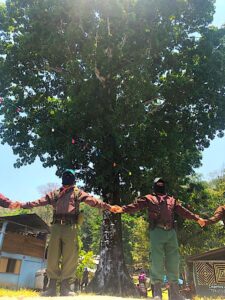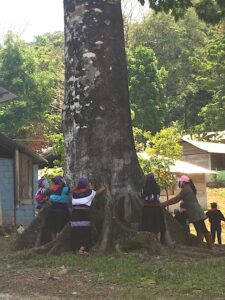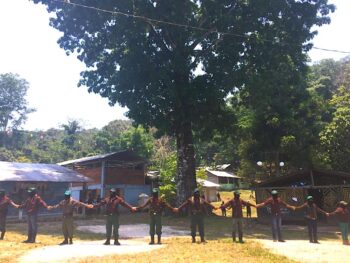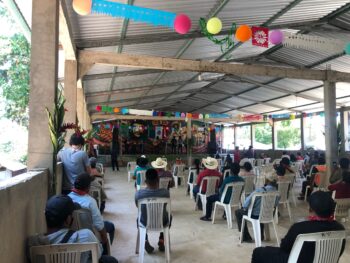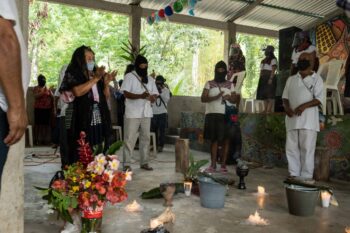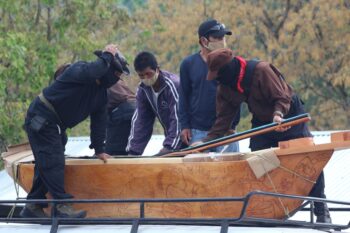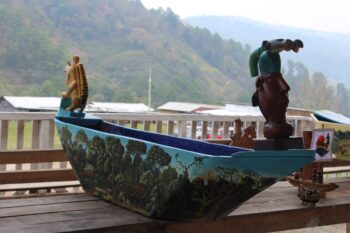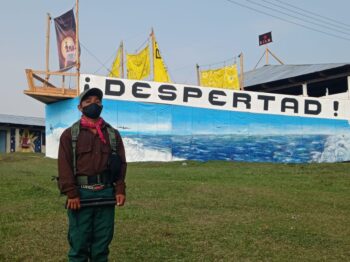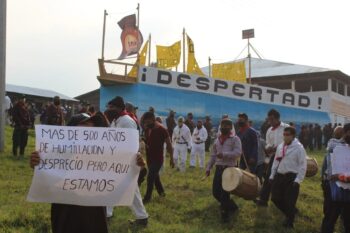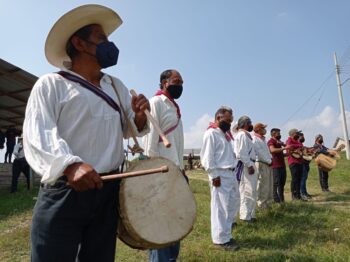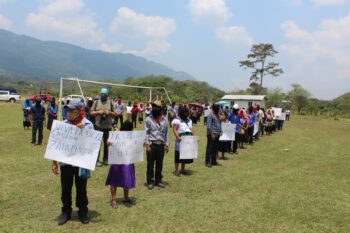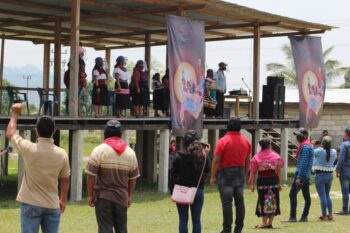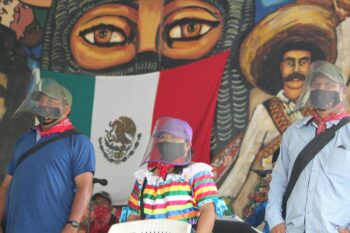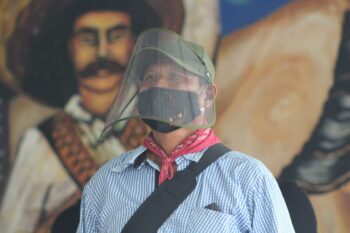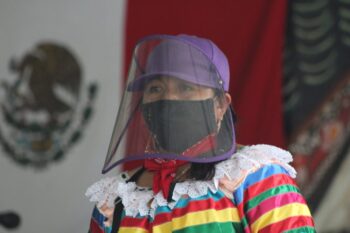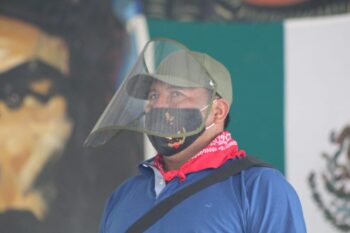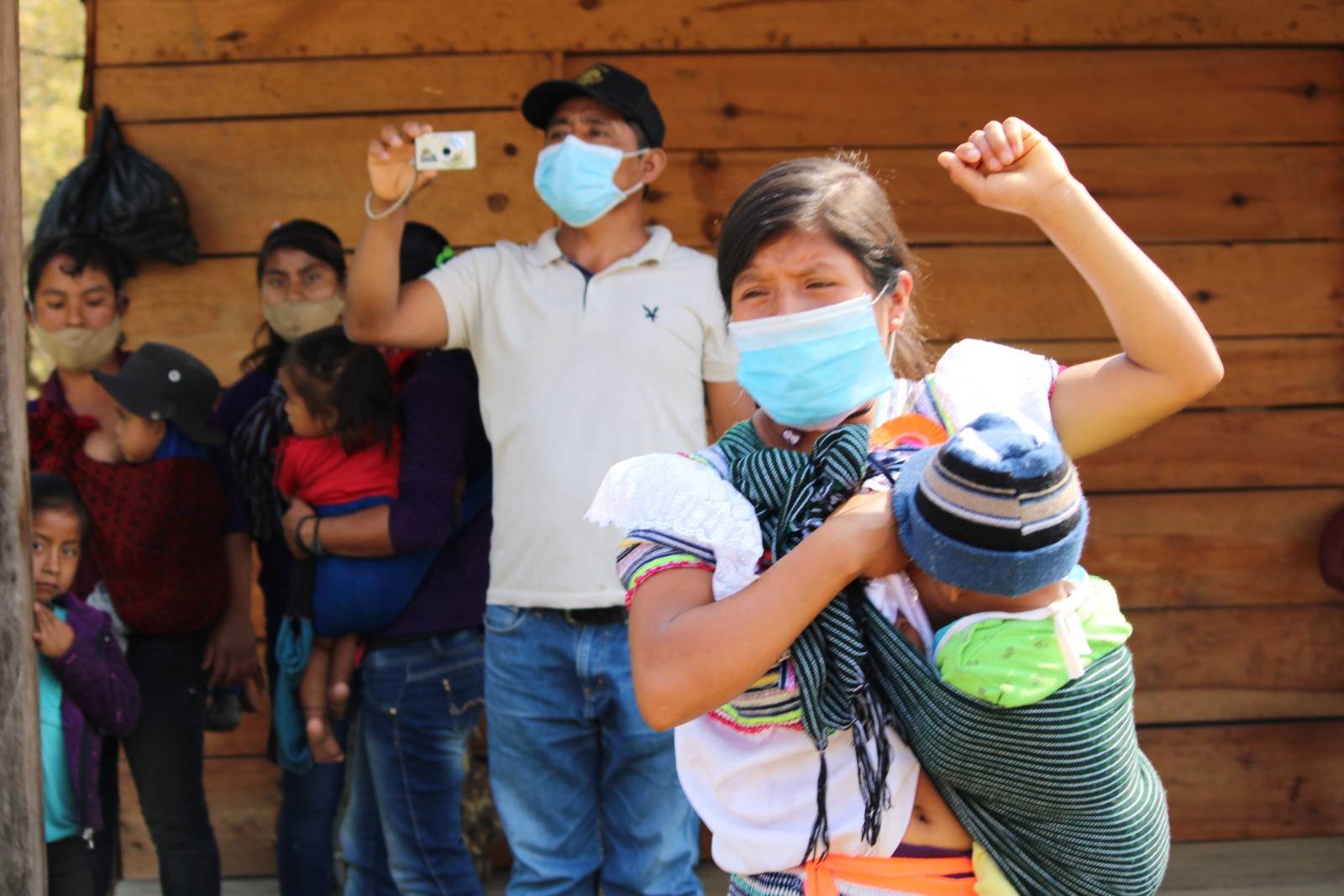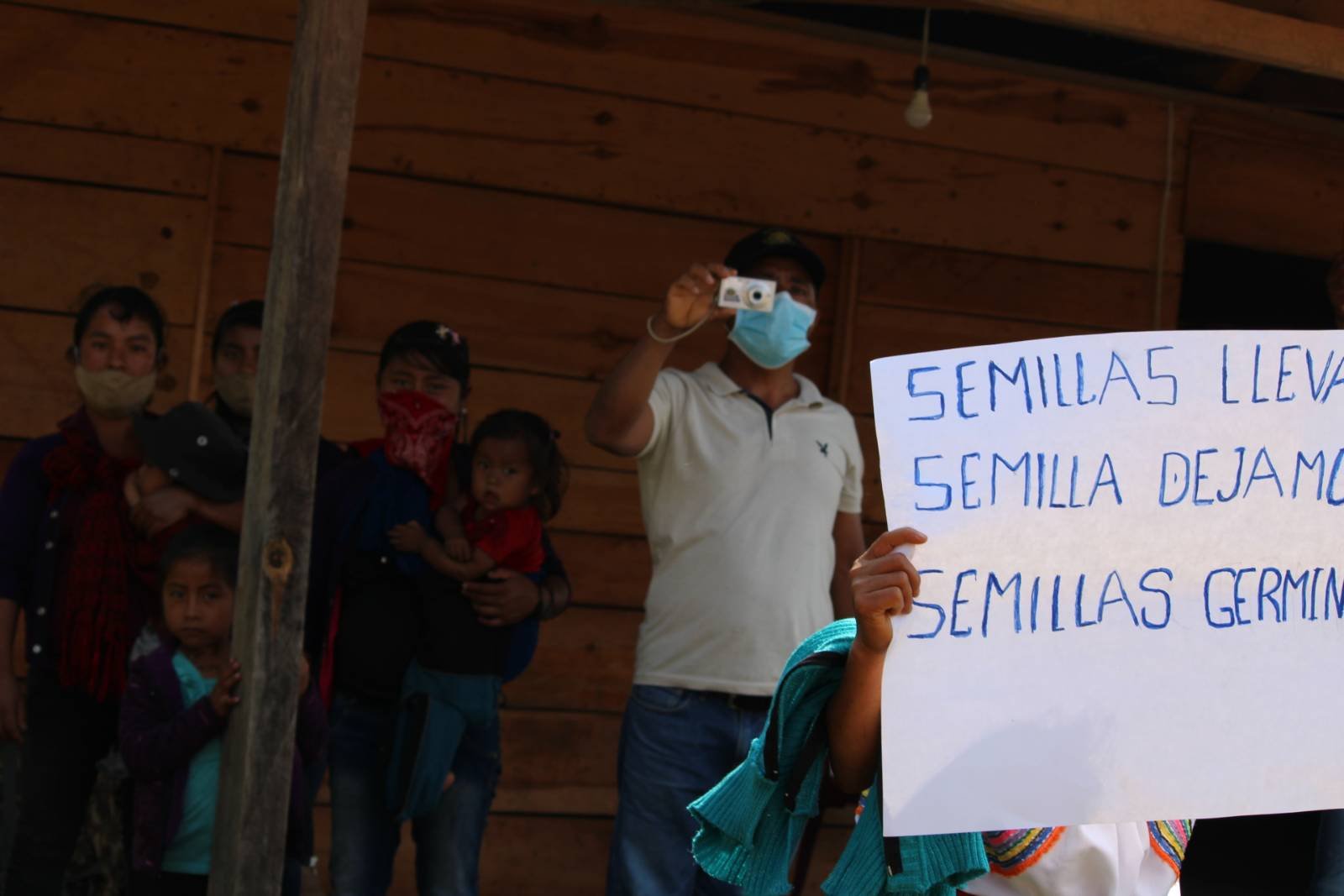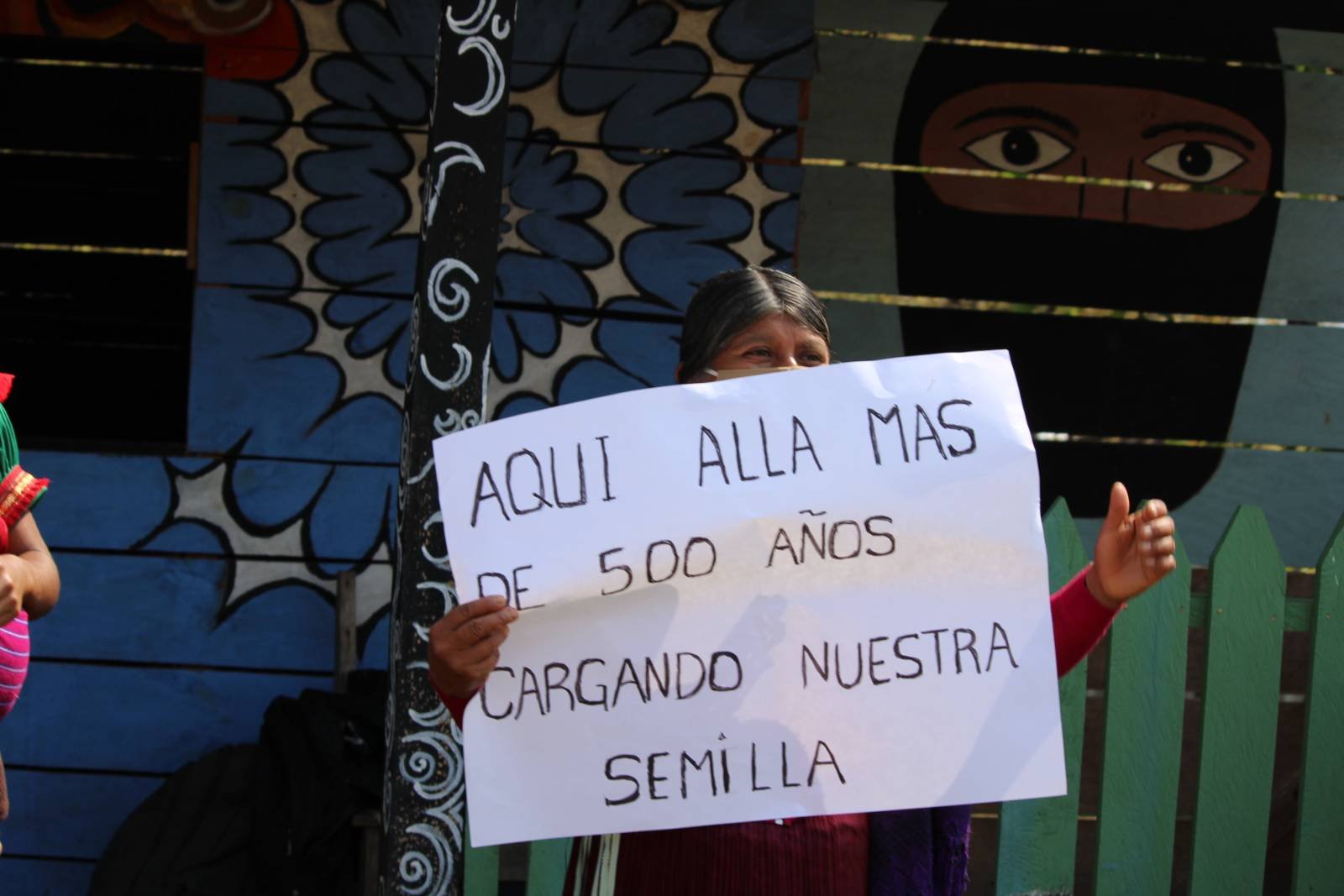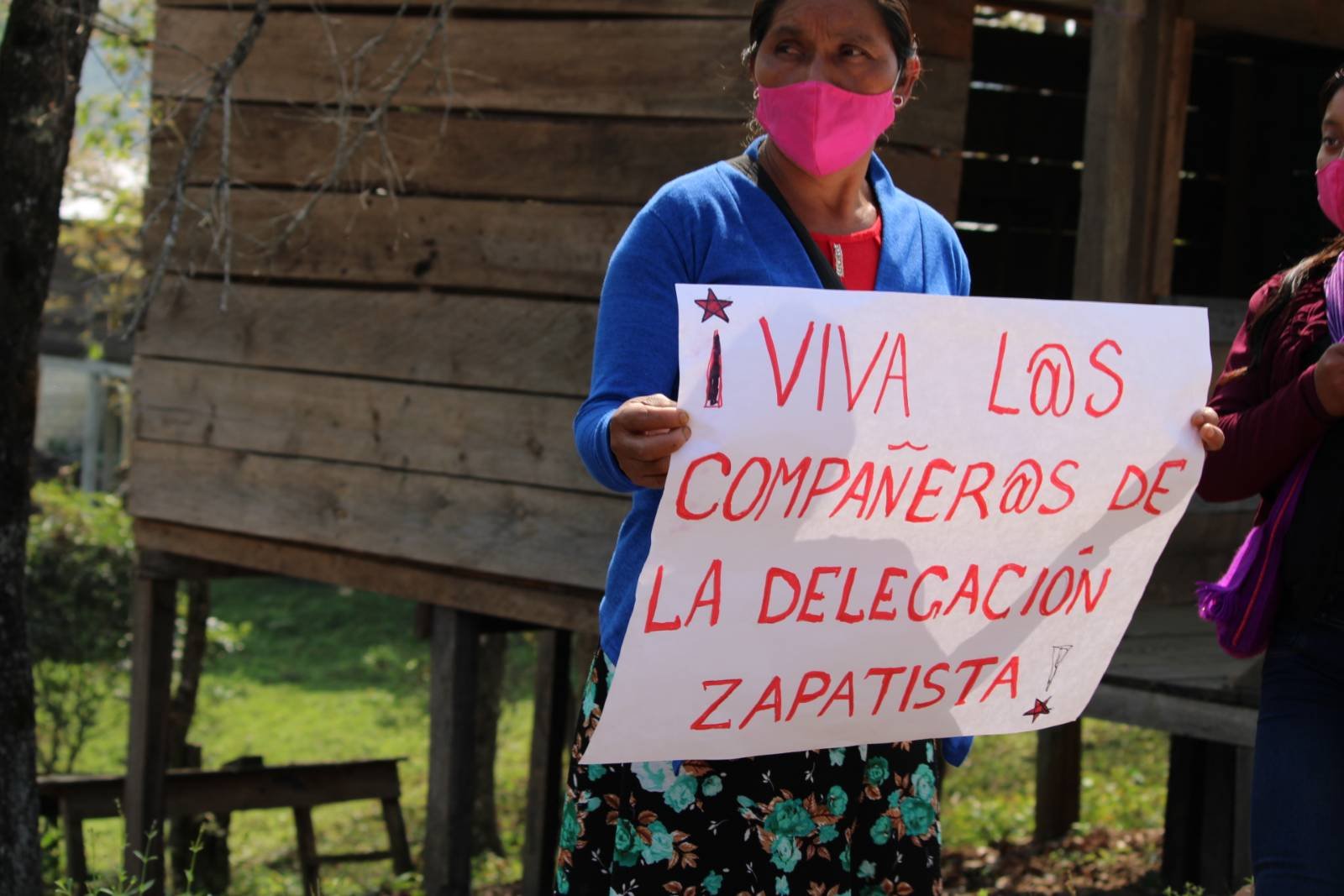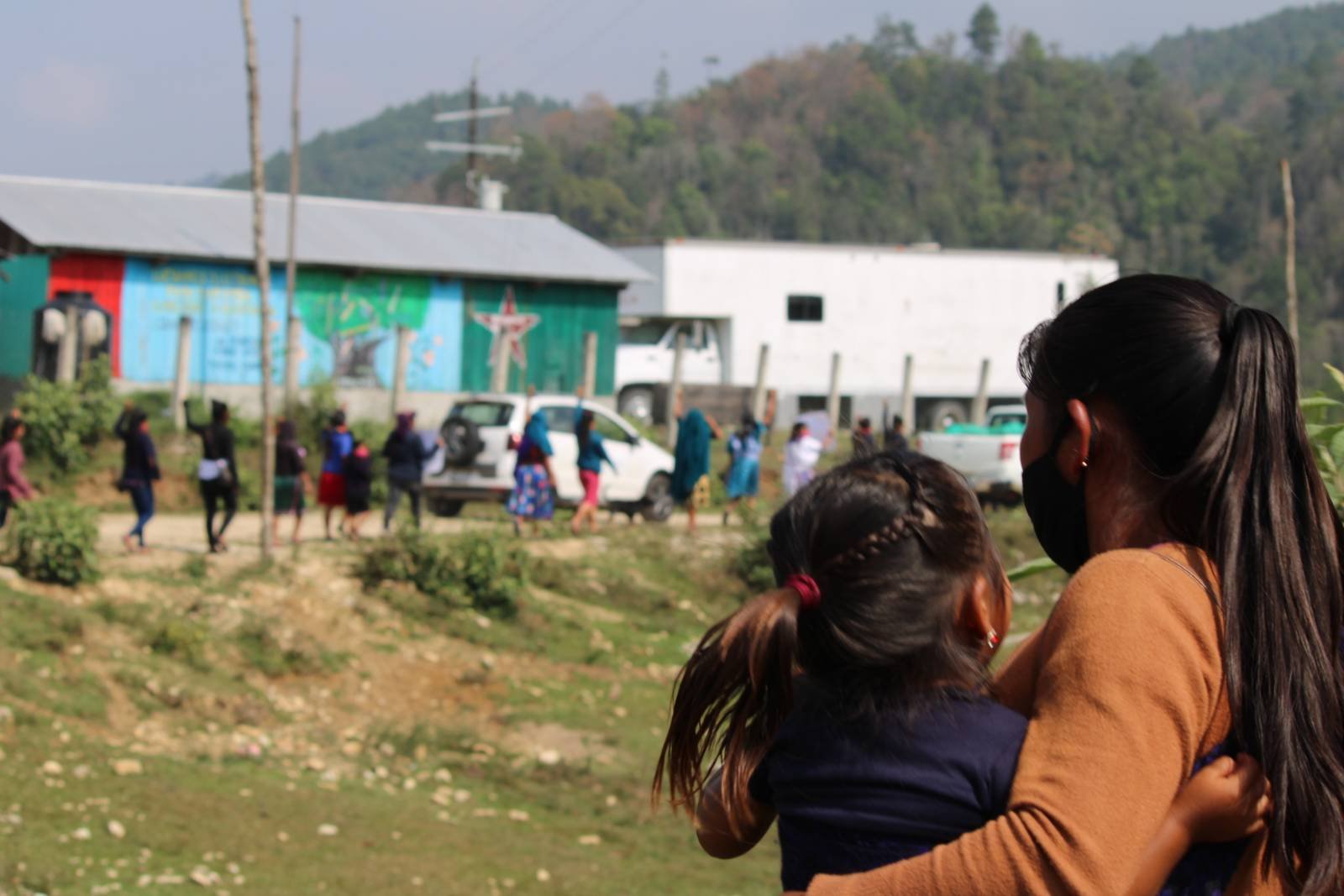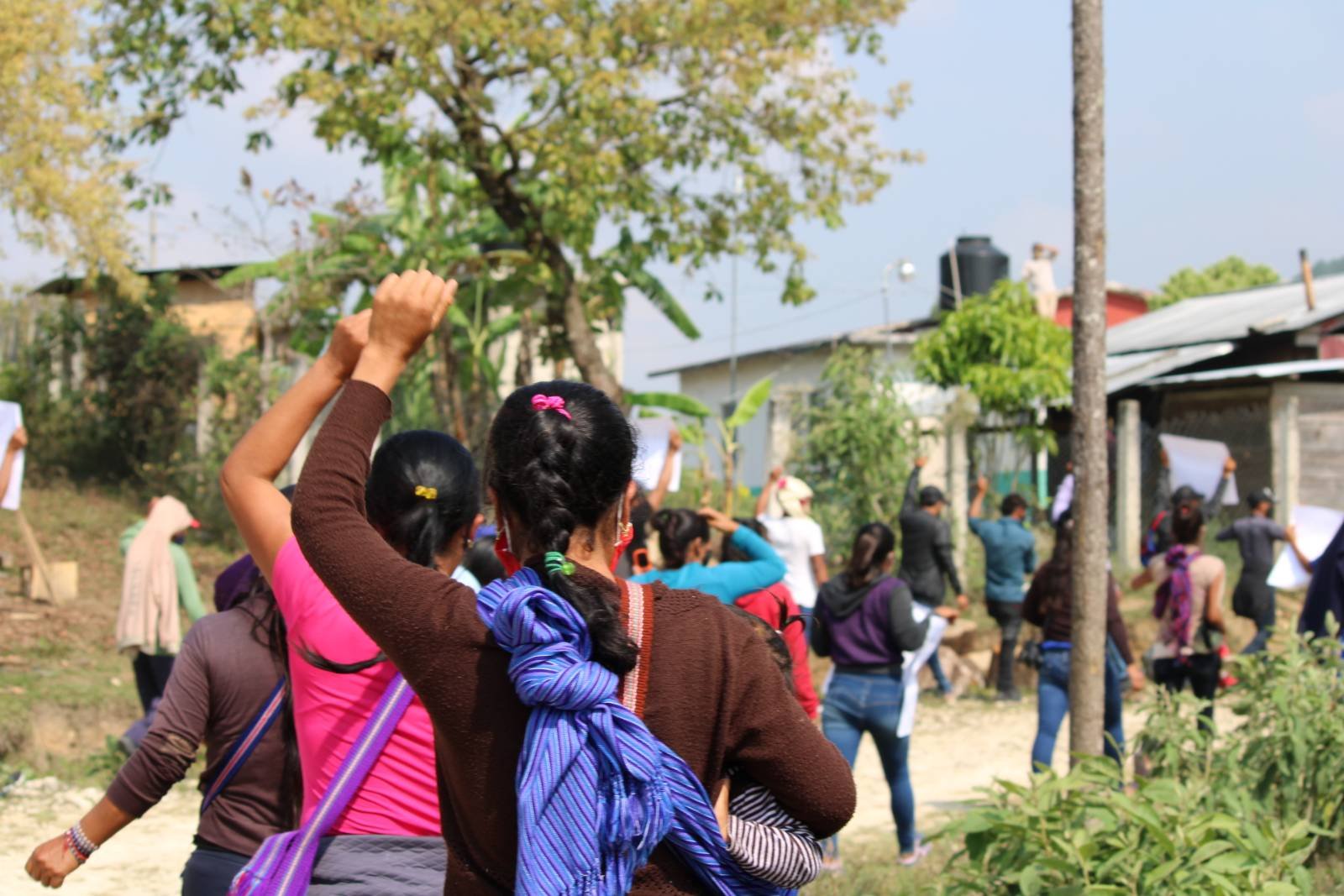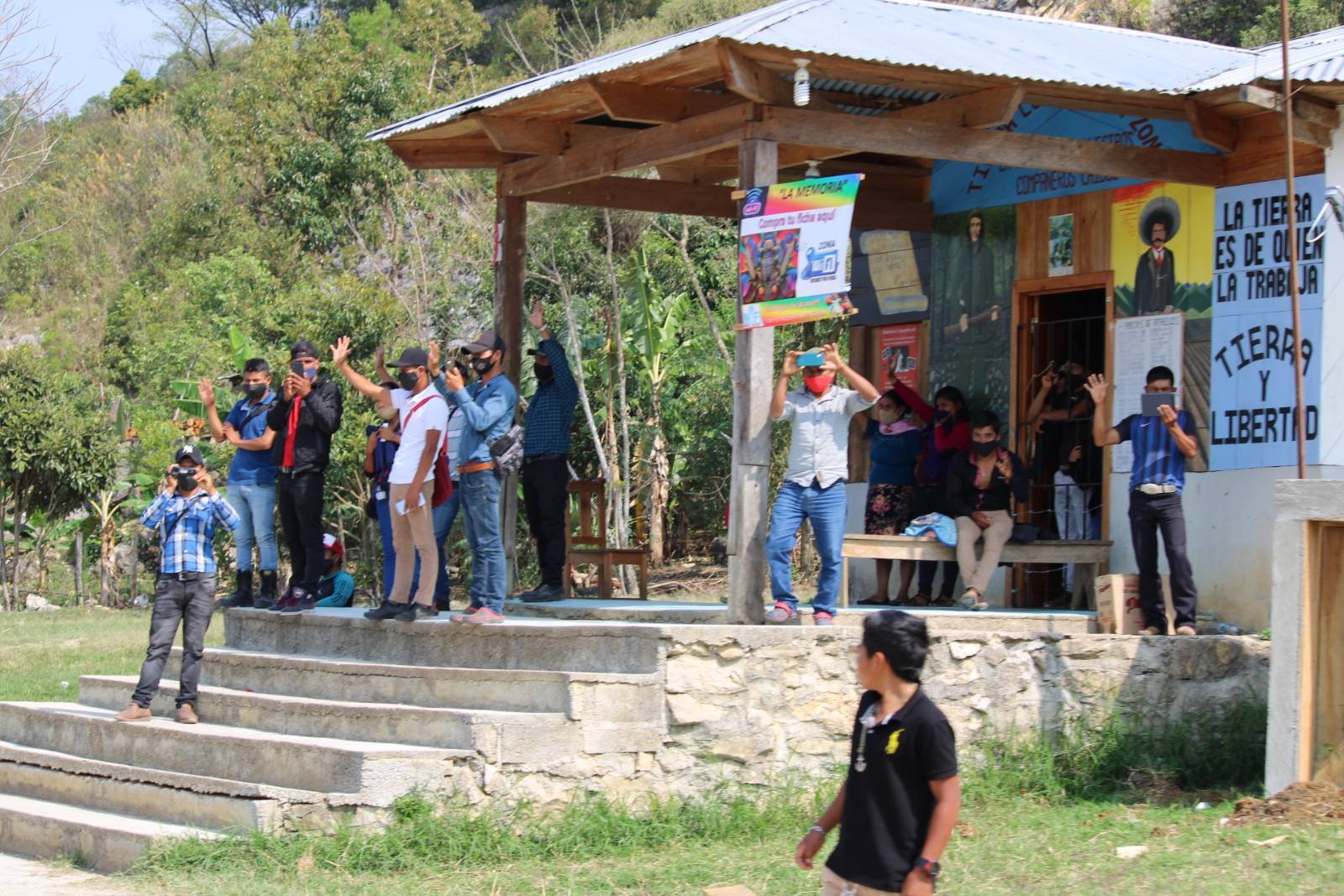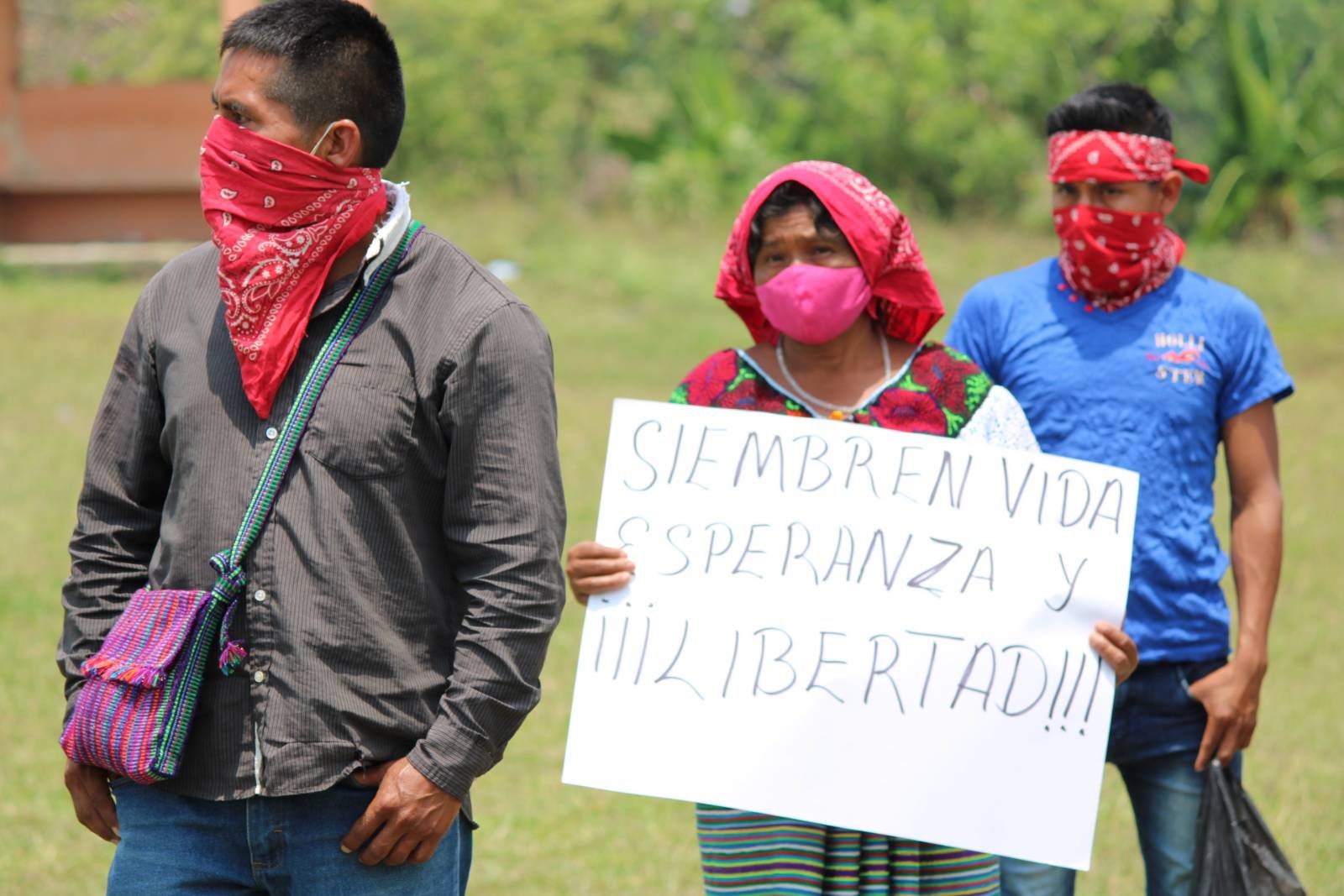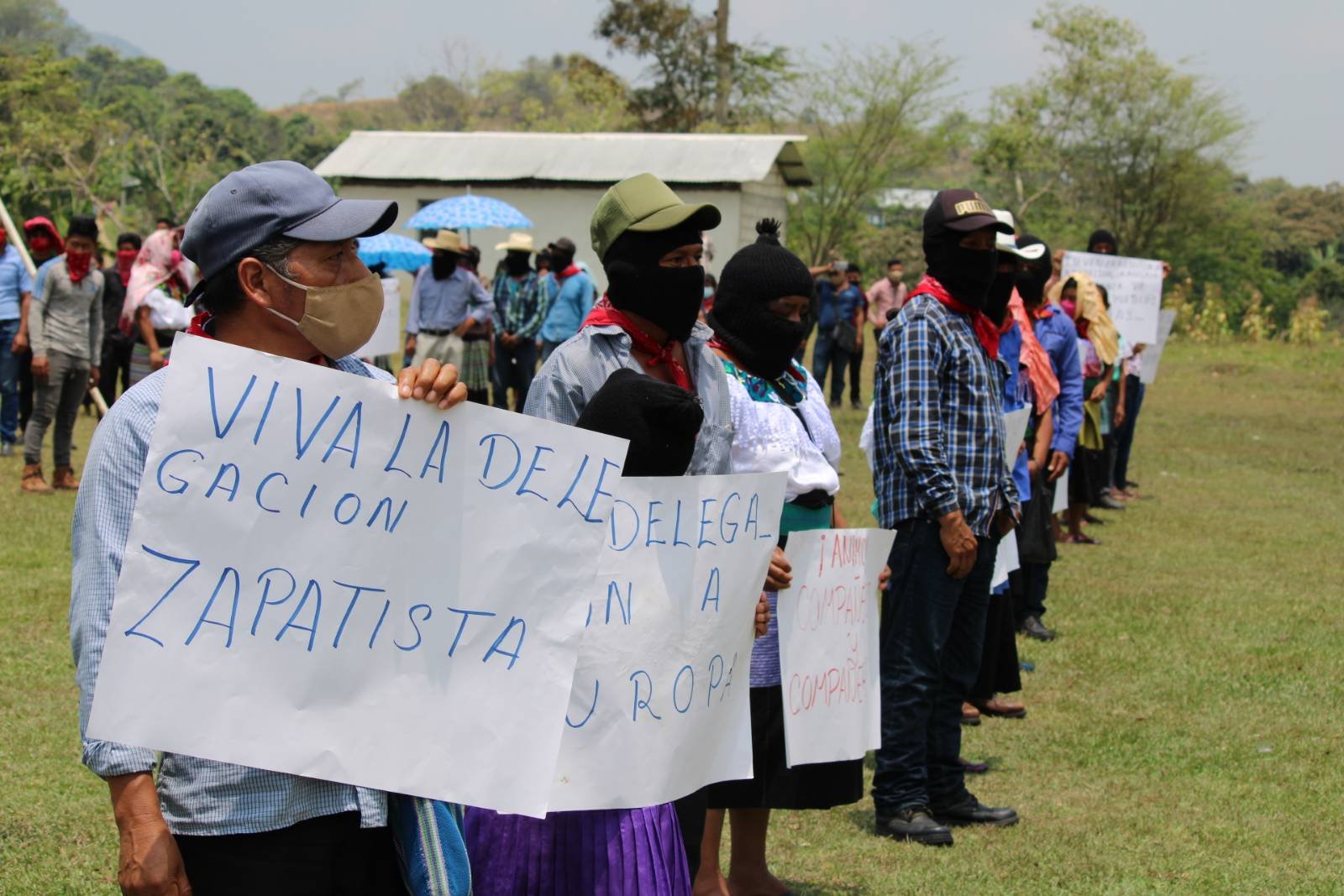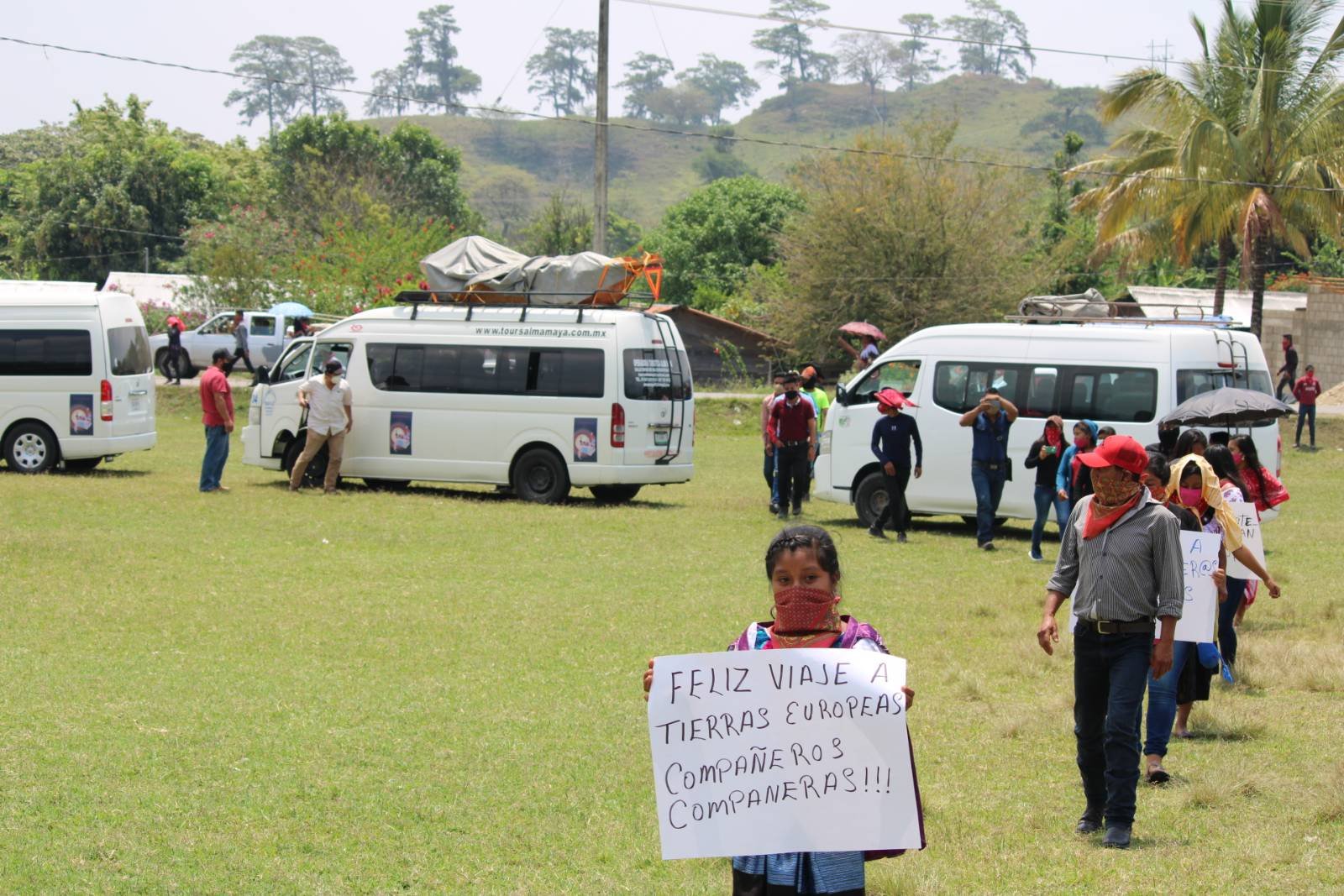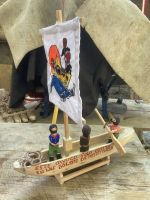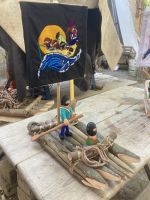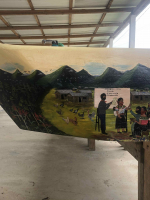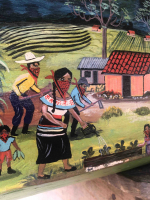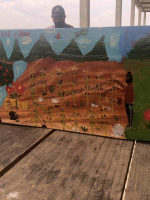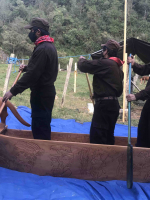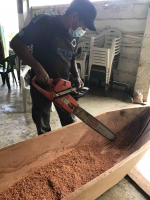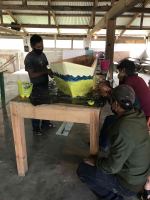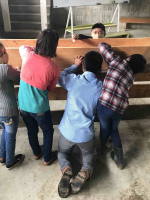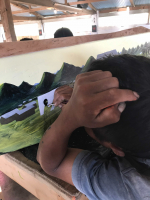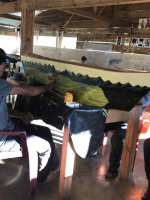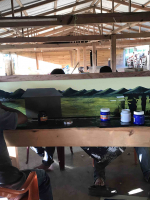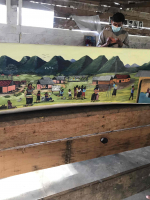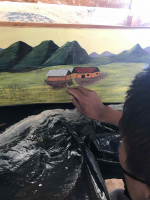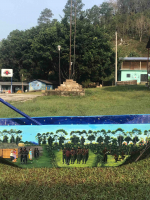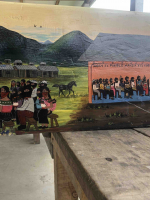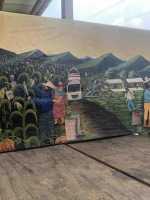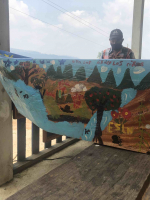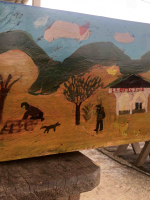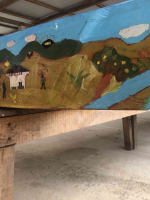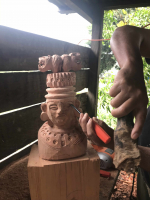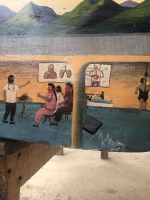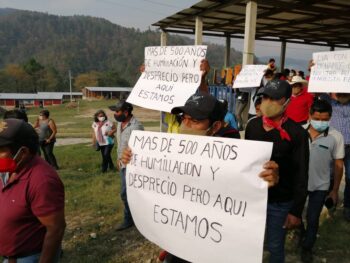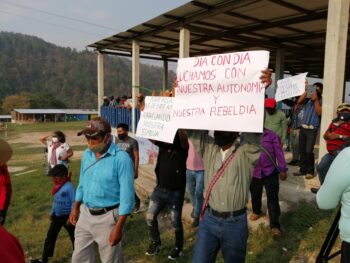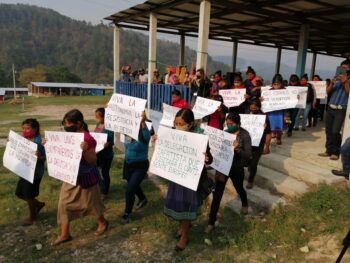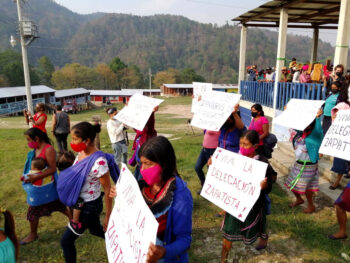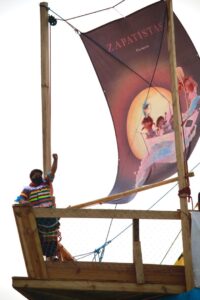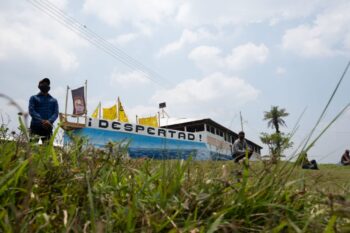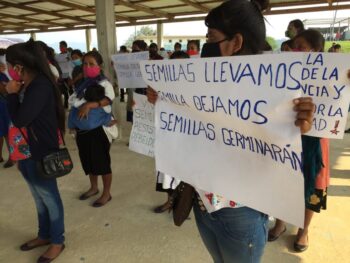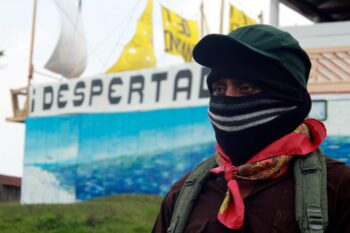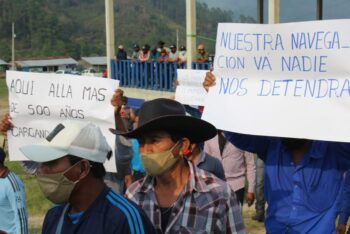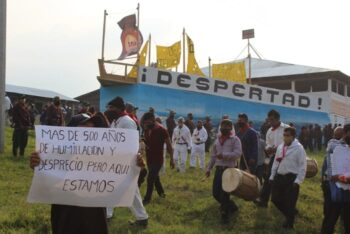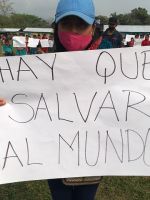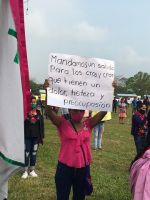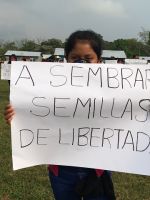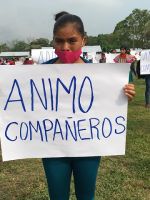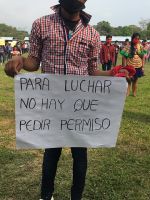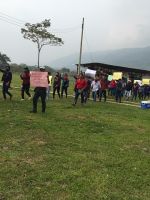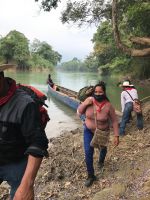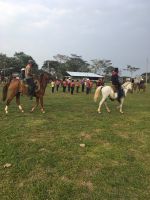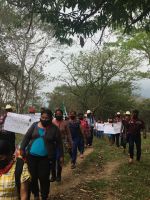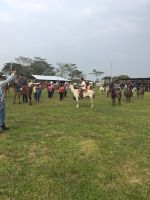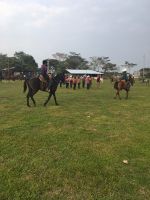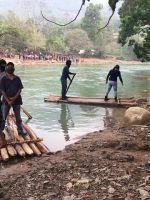(Español) EZLN: Que cuiden esa semilla, la planten, y la hagan crecer
Roberto Barrios, Chiapas, 27 de abril 2021.
Cuando el sol alcanzó el cenit, este 27 de abril de 2021 a las doce del día, milicianos zapatistas surgieron y se posicionaron en círculo alrededor de la ceiba majestuosa situada en frente de la entrada del Caracol V “Que habla para todos”, sede de la Junta de Buen Gobierno “Nueva Semilla que va a producir”en el ejido Roberto Barrios, a media hora de Palenque en Chiapas, México. Se acercaron enseguida unas mujeres zapatistas hasta el tronco del árbol sagrado de los pueblos mayas y, en silencio, pusieron delicadamente sus manos en él, recordando las raíces profundas de la vida que defienden hasta la muerte.
Al son de las palabras internacionalistas de un corrido interpretado por una banda local, la delegación marítima recibió toda la atención de las y los anfitriones de esta región tzeltal y ch’ol de la zona norte del estado chiapaneco. Cabe resaltar que los zapatistas guardan un extricto respeto a los protocolos de sanidad, en todo momento, inclusive en el baile popular nocturno. Ante la presencia del Escuadron 421 en el templete del auditorio del Caracol, ancianas y ancianos pronunciaron palabras en maya, en el recinto, alrededor de velas y flores que acogieron las oraciones rituales que bendicen el viaje de la primera delegación que se embarcará a Europa el próximo 3 de mayo.
Más tarde, en el auditorio, bases de apoyo, miembros de la dirección política, de la Junta de Buen Gobierno y del Comité Clandestino Revolucionario Indígena dieron su palabra.
“Esperemos que los compañeros cuiden esa semilla, la planten, y la hagan crecer”, expresó el Base de Apoyo Zapatista (BAZ), Fidel, del municipio autónomo Vicente Guerrero, en alusión a la palabra zapatista que será compartida a las personas del continente europeo con quien se entrevistará el llamado “escuadrón zapatista 421”, a partir del próximo mes de junio, como lo han comunicado los rebeldes chiapanecos. El acto de despedida se llevó a cabo en el Caracol zapatista de Roberto Barrios, al norte de Chiapas.
El BAZ Fidel, puntualizó que el escuadrón conformado por cuatro mujeres, dos hombres y un compañeroa, “decidieron llevar la semilla de resistencia y rebeldía por el mundo, es así que demostramos el amor y respeto por la vida, es así como queremos vivir en paz, sin destrucción que hace el sistema capitalista”. “La muerte llegará si no defendemos la vida. Los compas están dispuestos a llevar la semilla en los cinco continentes que es la idea que tenemos como zapatistas, empezando por el continente europeo”, agregó Fidel.
“Hoy estamos despidiendo a nuestros compañeros que saldrán de viaje. Estos compas van de todo corazón y llevan la semilla de la vida que nosotros como zapatistas llevamos años construyendo y cosechando. Y queremos que esa semilla llegue a tierras europeas. Esperemos que los hermanos europeos lo echen a andar esa semilla”, coincidieron en su participación bases de apoyo, milicianos e integrantes de junta de buen gobierno. “La idea es visitar los cinco continentes porque sabemos que el sistema capitalista no está en un solo lugar, esta dispersado a nivel mundial”, enfatizaron.
“No vamos a permitir que nos destruya el sistema capitalista, por eso no obliga a movernos, para poder así defendernos”, expresó un integrante del municipio Francisco Villa. “Ahora lo que es el mensaje y la semilla zapatista tiene que ir más allá a todas las personas sin distinguir el color o la lengua”, añadió el BAZ.
La salida de la delegación zapatistas, “abre una oportunidad de conocernos, escucharnos, mirarnos. Estamos dando la encomienda para que lleven la semilla de lucha por la vida de la humanidad y todos los seres vivos que habitamos en ella”, expresó Jaquelin,a nombre del Comité Clandestino revolucionario Indígena (CCRI). “Nosotros nos vimos obligados a tomar la decisión de salir a pesar del virus que nos tiene encerrados. El sistema capitalista no se detiene y avanza con el saqueo, el despojo y la destrucción de los seres vivos, como en los proyectos del tren maya, corredor interoceánico entre otros”, alertó la insurgente chiapaneca. “Vimos que era necesario escuchar el dolor, rabias y sus sueños de los hermanos de otra parte del mundo2, añadió de forma categórica.
“Seguimos vivos a pesar de cinco siglos de guerra de exterminio. Los conquistadores nos sometieron en las fincas, pero nuestros abuelos resistieron esa guerra de exterminio. Pueblos originarios de todas las partes del mundo que les hace falta organizarse, ¡despertad!”, finalizó la integrante del CCRI.
